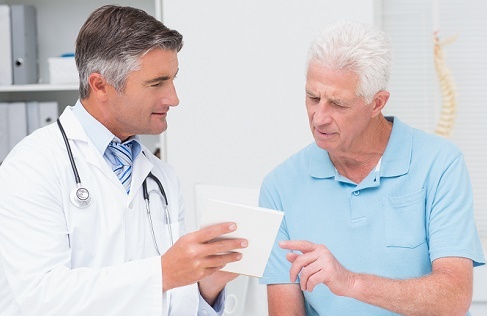Breathe in, breathe out. Breathe in, breathe out. Ahhhh!
Breathing is so natural that we seldomly stop and appreciate how important it is just to be able to inhale and exhale!
“I get a lot of questions from seniors about balance, joint health, pain reduction, and so on,” explained David Jacobs, Co-Owner of Level 3 Fitness, during our interview at his state-of-the-art fitness studio in Denver, CO (video interview above). “However, I believe the number one thing seniors can do to help themselves physically would be to spend a lot more time working on their breath, as it can improve all of those things, and more.”
An interesting thing happens when seniors commit to practicing daily breathing exercises… their health improves, and not just in one area, but multiple. Below are some details on four important health benefits derived from daily breathing exercises.
Improved Focus and Attention
Noradrenaline in a natural chemical in the brain released during moments when the body needs to spring into action. This is normally a good thing, however when we are stressed the brain releases too much noradrenaline, ultimately causing us to feel unfocused and discombobulated. Diaphragmatic breathing, often called deep belly breathing, helps us slow our heart rate and decrease noradrenaline; subsequently improving focus and attention.
On the surface, increased attention and focus might not seem like a significant factor in geriatric healthcare, but when you consider that every 19 minutes an older adult dies from a fall, it’s easy to connect the dots to see how improving one’s focus is vital. Additionally, seniors who have fallen once are susceptible to fall again. As one study shows, readmission rates to the emergency room after a fall could be as high as 17.4% among the elderly.
We recommend that seniors try pranayama yoga to help improve diaphragmatic breathing and increase focus. Pranayama literally means “Control of Breath”. You can find many helpful tutorials and guided pranayama yoga classes on YouTube.
Pain Reduction
For many seniors, the source of their chronic pain is derived from a condition called ischemia, whereby blood flow is restricted or reduced in parts of the body. Healthy blood flow and circulation cannot be understated, as blood carries oxygen from one part of the body to another. Possible symptoms of ischemia include dizziness, fainting, shortness of breath, chest pain, and even death by heart attack (myocardial ischemia).
One study in particular, as reported by the US National Library of Medicine, demonstrated just how important breathing is for patients with ischemia. This specific study contained 145 random male participants, all suffering from ischemic heart disease. Those patients that practiced diaphragmatic breathing for at least three months showed an increase in heart rate variability, which increased oxygen flow to vital organs. For seniors, an age demographic most susceptible to chronic pain, the study suggests that daily breathing exercises could significantly help with pain management and relief.
Increased Relaxation and Reduced Anxiety
The parasympathetic and sympathetic nervous system work together in the human body. The parasympathetic nervous system is the division of the nervous system responsible for activities that occur when the body is in a general state of rest (slowed heart rate). Such activities include digestion, urination, defecation, relaxation. On the other hand, the sympathetic nervous system is responsible for our fight or flight mode. It works by boosting heart rate and sending extra blood to muscles. Both parts of the nervous system are critical for balanced health. When they get out of harmony it can result in serious health implications such as high blood pressure, anxiety, depression, and heart disease.
In today’s fast paced world of multitasking, constant stimulation, and immediate gratification, the parasympathetic nervous system is often under activated. As a result, many of us are not as rested and relaxed as our bodies require. So, that begs the question, what can you do to help activate your parasympathetic nervous system?
By making a conscious effort to practice daily diaphragmatic breathing exercises, even if only for a handful of minutes, you can activate your parasympathetic nervous system, making you feel more relaxed and calmer. Feeling calmer is not only beneficial for our mental health, but also is advantageous to healthy organ function. Increasing oxygen flow, lowering blood pressure, reducing unnecessary adrenaline, and rewiring the brain help allow for more positive states of mind to arise. Try meditation geared towards relaxation exercises. You can find excellent options on youtube.
Improved Sleep
Sleep is vital to good health. And not just getting enough sleep, but the quality of sleep matters too. There is still a great deal we do not understand about sleep, but we do know that it is critical for cellular restoration, muscle repair, cell reorganization, brain function, and maintaining a strong immune system.
When one’s breathing suffers, so does his or her quality of sleep. According to Sleep Foundation, an estimated 18 million Americans suffer from sleep apnea – a condition in which breathing is repeatedly interrupted during sleep. Sleep apnea may lead to hypertension, heart disease, plus mood and memory problems.
Numerous studies have pointed to a correlation between regular breathing exercises throughout the day and improved sleep at night. There are too many variables that can affect our sleep, from lack of oxygen to stress, and even the effects of aging. However, we do know that for seniors suffering from insomnia and other sleeping complications, practicing daily breathing exercises will most likely will lead to a better quality and quantity of sleep.
Article and Video by Alex Milzer


Comments